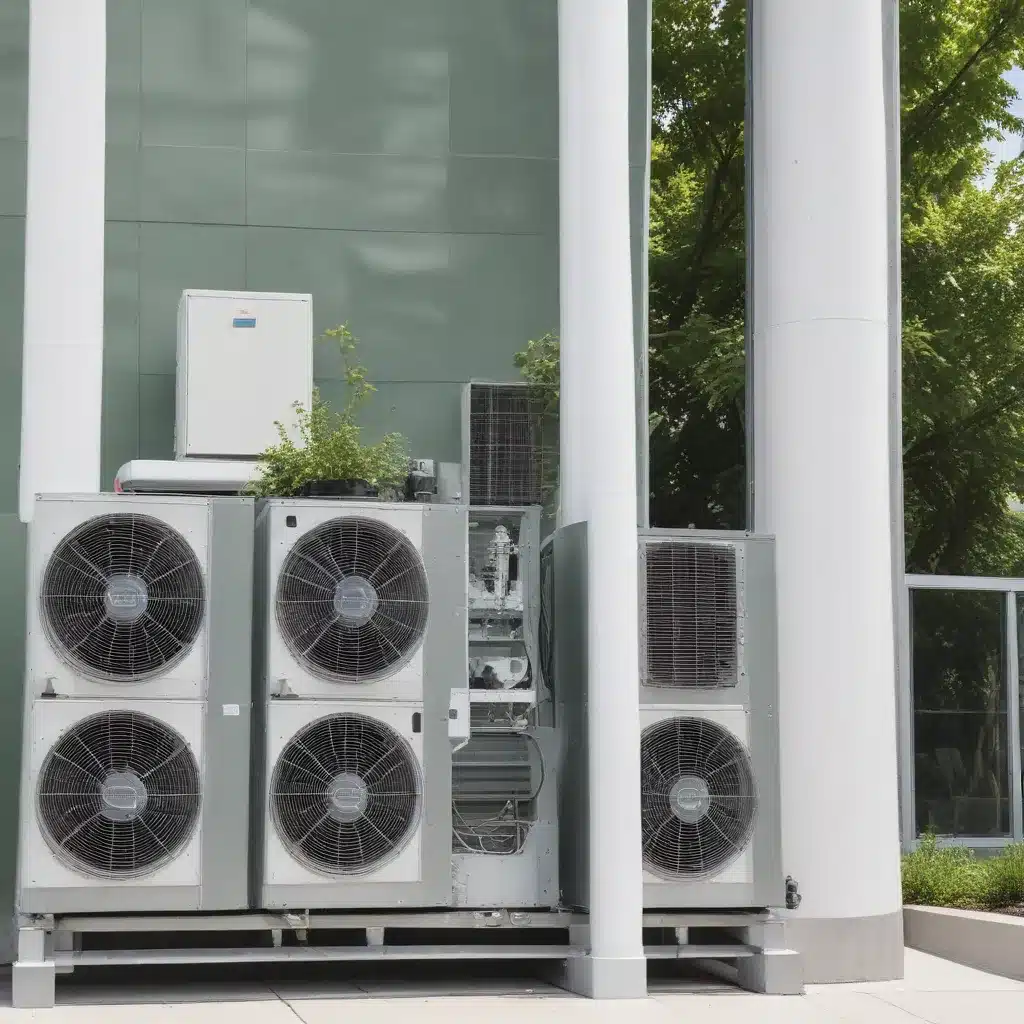
Optimizing Climate Control for a Greener Future
As an experienced air conditioning specialist, I’ve had the privilege of witnessing firsthand the remarkable evolution of HVAC (Heating, Ventilation, and Air Conditioning) systems and their integral role in sustainable building design. In an era where environmental consciousness is paramount, the integration of efficient and eco-friendly climate control solutions has become a defining aspect of modern construction.
In my years of working in the industry, I’ve come to appreciate the delicate balance between maintaining comfortable indoor environments and minimizing the carbon footprint of our buildings. It’s a fascinating intersection of engineering, technology, and environmental stewardship, and one that I’m eager to share my insights on.
The Sustainable Advantage of Green HVAC Systems
At the heart of green building design lies the principle of reducing energy consumption and greenhouse gas emissions. HVAC systems play a pivotal role in achieving these goals, and the innovations in this field are truly remarkable.
The foundational premise of green HVAC systems is to optimize energy efficiency while ensuring optimal indoor air quality. These systems are designed to minimize the use of non-renewable energy sources, such as fossil fuels, and instead harness renewable alternatives like solar power or geothermal energy.
One of the primary advantages of green HVAC systems is their ability to significantly reduce energy usage. Advanced technologies like energy recovery ventilators and variable speed drives for fans and pumps can drastically lower the energy required to heat, cool, and circulate air throughout a building. This not only translates to lower utility bills for homeowners and businesses but also contributes to a smaller carbon footprint and a greener environment.
But energy efficiency is just one piece of the puzzle. Equally important is the focus on maintaining exceptional indoor air quality. Green HVAC systems are equipped with sophisticated filtration systems that can remove harmful pollutants, allergens, and particulates from the air, ensuring a healthier and more comfortable indoor environment for occupants.
Intelligent Automation and Sustainable Materials
The integration of smart technologies and automated controls further enhances the sustainability of green HVAC systems. Intelligent building management systems can monitor and adjust the climate controls based on real-time data, such as occupancy levels and weather conditions. This level of responsiveness and optimization helps to minimize energy waste and ensures that the system is operating at peak efficiency.
Moreover, the materials and production processes used in the manufacturing of green HVAC equipment are also becoming increasingly eco-friendly. Manufacturers are now incorporating recyclable or sustainable materials, and the production methods themselves are designed to reduce waste and minimize the environmental impact.
The Importance of Integrated Design
One of the hallmarks of successful green building design is the seamless integration of HVAC systems with the overall architectural and structural elements. Architects and engineers work closely to incorporate passive design strategies, such as optimal building orientation, insulation, and thermal mass, which can significantly reduce the heating and cooling loads on the HVAC system.
By considering the building’s design and the HVAC system as a cohesive whole, designers can create a synergistic relationship that enhances energy efficiency and occupant comfort. This holistic approach is essential in achieving the high-performance standards that define green buildings.
Overcoming Challenges and Embracing the Future
While the benefits of green HVAC systems are undeniable, there are still some challenges that need to be addressed. The initial cost of these systems can be higher than traditional HVAC solutions, and there may be a need for specialized maintenance and operation skills.
However, the long-term energy savings and environmental benefits often outweigh the upfront costs. As the demand for sustainable building practices grows, the industry is poised to overcome these challenges through continued innovation, improved accessibility, and the development of more user-friendly technologies.
Looking ahead, the role of HVAC systems in green building design is only set to become more prominent. Advancements in material science, artificial intelligence, and the Internet of Things are driving the creation of even more responsive, energy-efficient, and eco-friendly climate control solutions.
Embracing the Hamilton Advantage
At Hamilton Air Conditioning, we are committed to staying at the forefront of these advancements. Our team of experienced professionals has a deep understanding of the latest HVAC technologies, maintenance techniques, and industry trends. We work closely with our clients to design and install high-performance systems that not only meet their comfort needs but also contribute to the overall sustainability and energy efficiency of their homes and businesses.
One of the key advantages of partnering with Hamilton Air Conditioning is our focus on customized solutions. We recognize that every building and its occupants have unique requirements, and we tailor our services accordingly. Whether you’re building a new green home, retrofitting an existing structure, or simply looking to optimize your HVAC system’s performance, our experts are here to guide you every step of the way.
Moreover, we place a strong emphasis on educating our clients about the importance of proper maintenance and energy-efficient practices. By working together, we can ensure that your HVAC system continues to operate at its peak efficiency, maximizing your energy savings and minimizing your environmental impact.
Conclusion
As we continue to navigate the challenges of climate change and the growing demand for sustainable living, the role of HVAC systems in green building design has become increasingly vital. By embracing energy-efficient technologies, prioritizing indoor air quality, and integrating smart automation, we can create buildings that not only provide comfort but also contribute to a more sustainable future.
At Hamilton Air Conditioning, we are proud to be at the forefront of this movement, helping our clients achieve their energy and environmental goals through the integration of cutting-edge HVAC solutions. By working together, we can shape a greener, more sustainable tomorrow, one building at a time.